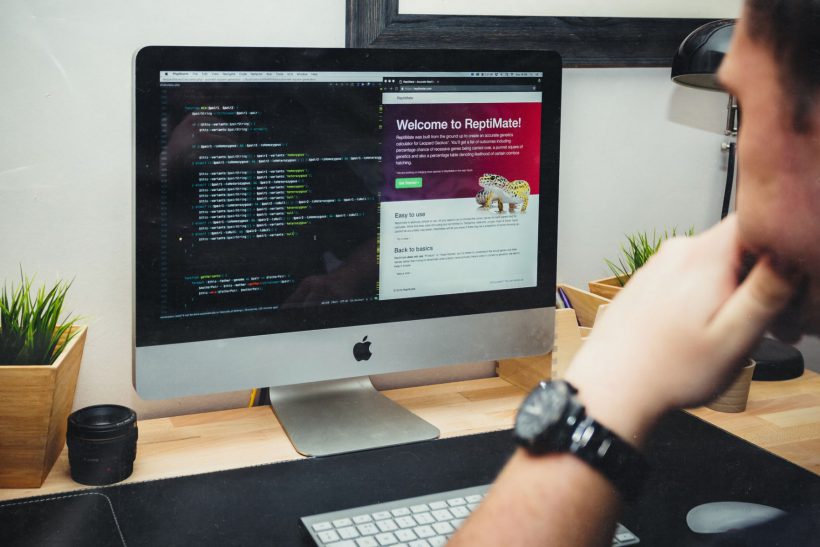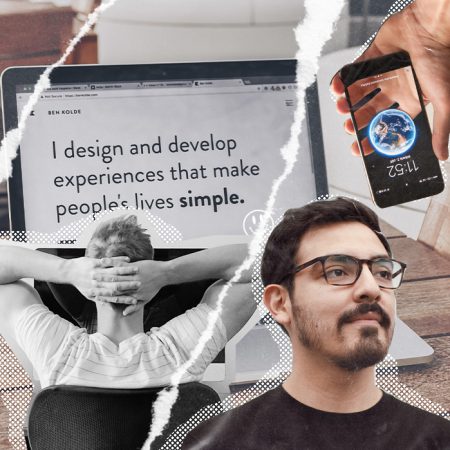Any website serves a specific purpose. When we talk about business websites, this can be publishing detailed information about the company and its products, customer acquisition and sales, improving customer service, or establishing your brand image.
The website can help your brand reach many goals and significantly raise the credibility of your company. Business owners often wonder what the key to achieving these goals is. The answer is simple: make your website user-friendly.
What Makes a Website User-Friendly?
The term “user-friendly” seems self-explanatory, but what does it mean in terms of web design?
Today, when most businesses have their own websites, it’s all about breaking through the noise and trying to get customers’ attention. This is why your site needs to be as engaging as possible to give your customers the best user experience.
“User experience” refers to practical, effective, meaningful, and valuable aspects of the user’s interaction with the interface. One of the essential aspects of the user’s experience (UX) is usability. The level of website usability is determined by the user interface design and how effectively its features help your users achieve their goals.
Even a visually stunning website can be difficult for visitors to interact with. It is all about bringing benefits to your users. In fact, Google specifies the “focus on the user” as their main guiding principle. In other words, creating a user-centered design is the key to success with both your prospects and search engines.
To achieve good website usability, you need to make sure that all of the website’s components are well-structured and purpose-oriented. Identifying specific aspects of a website’s usability can be challenging, especially for those who are designing their first business website. Luckily, you can learn about the essential properties of user-friendly websites below.
1. Load time

This is the first thing visitors notice when coming to your website. You want to make a good first impression, right? Nothing is more annoying for users than a site that takes forever to load. Slow loading speed is also one of the reasons for a high bounce rate (this is when visitors leave the website immediately after loading it and never come back). In fact, about half of users say they expect a website to load within two seconds and will abandon one that loads in more than three seconds. Ensuring that your site loads fast is crucial for good usability. This also enhances your search engine ranking.
There are a few things that might be slowing down your website:
- Using non-optimized images.
It is advisable to avoid using too many images on your homepage. Uploading heavy and large-sized files or using complex file formats is not the best idea either. Having 12 non-optimized images at your website may add 2-3 MBs of extra page load. Try resizing your images instead. For example, a 420 Kb PNG image can be shrunk to 80 Kb by optimizing it. And the version of an image that is 400x200px will perform better than its “larger” version of 1200x600px. To optimize your images, you could use Photoshop or online resizing tools, such as Tiny Png and Online Png Tools.
- Using rare fonts for all your content.
If you have plenty of text copy on your website pages, it is recommended to use popular fonts that are already cached and load quickly. On the other hand, a cumbersome font can slow down your website. One of the best practices is to use Google fonts. They have an extensive collection and allow you to check if a chosen font loads fast enough.
- Using parallax.
Parallax scrolling is an animation effect when your website’s background moves at a slower speed than the rest of the page, creating an illusion of depth and providing an engaging experience. But dynamic elements like this have their drawbacks too. The page’s code needs to constantly calculate where every element should be placed as your visitor proceeds further down the page. This causes a holdback in page scrolling. The parallax effect is also difficult to execute on mobile versions of websites.
- Overusing text graphics.
Many websites still use images to display text. There is no harm in using an image for your text logo, but we recommend avoiding text graphics in most other cases. They may take much longer to load compared to fonts.
Of course, there can also be technical reasons for slow website performance, such as lack of a load balancer, slow web hosting, poorly-written scripts, or just a site code that is too bulky.
If you build a site using a website builder, you will gracefully avoid these issues.
Here at Boxmode, we monitor our servers’ speed and performance to ensure that our customers’ sites load quickly.

2. Consistency

This is yet another paramount factor that your website usability relies on. A consistent design means that common user interface elements like your company logo, website navigation, page content, etc., appear in the same place on every page. Using a consistent layout throughout your website helps users navigate and locate each interface element with ease, which, in turn, improves usability.
Key principles of consistent website design are as follows:
- The website color scheme matches your brand colors and is used throughout the website.
- Spacing between elements of the layout is coherent vertically and horizontally.
- Navigation menus are displayed in the same place throughout the website.
- Form elements like buttons, text inputs, and drop-down lists look the same on all pages.
- All website icons are of the same family.
- Different content types are coherently combined in the right proportions.
The whole idea of consistency in web design can be put in a few simple words: “design that meets your users’ expectations.” Make sure your site has all the functionalities and features your audience would expect to find there. For example, a fitness studio website should definitely have a schedule section, while a nonprofit website should have an easy-to-find donation button or link.
In this regard, using a website builder like Boxmode saves you both time and effort, as our designers have already taken care of the templates’ consistency in terms of usability.

Mobile optimization

As more people use mobile devices to access the Internet these days, the mobile optimization of a business website is becoming a necessity. If your site is not optimized for mobile screens, you can’t consider it user-friendly for the lion’s share of your audience.
When designing for a small screen, it’s crucial to recognize five major differences between the mobile experience and desktop:
- Mobile users are incredibly goal-directed. They are usually interested in finding the required information as quickly as possible. Make sure your website covers this need.
- The mobile version of a website should be simplified compared to its desktop counterpart. Attempting to squeeze all the content and navigation elements into the mobile version of a website can make it unreadable and increase the bounce rate.
- Creating a complex menu with several sub-navigation levels is not the best idea in your mobile design. One-page mobile versions will always perform better.
- The size of on-page images should be optimized, allowing for fast loading via mobile connections.
- Mobile website copy should be readable without zooming. It’s best to use a font size of at least 14px on your webpages, but you should definitely test it out before launch.
You could check how your existing website displays on mobile by using Google Mobile-Friendly Test. If your website is currently not accessible via mobile, we recommend creating a mobile version. For one, you will be rewarded with higher rankings in Google search results, which means more traffic to your website.
When creating your website with the Boxmode website builder, you don’t need to worry about its mobile version. All Boxmode templates are already mobile-responsive.
Content is key

When you create a website, content and design are inseparable. Design is developed to help users get and use content. The usability of a site and the user experience largely depend on how coherently the design and content interact. A plain website with well-written content can perform better than a beautifully-designed one but with poorly scrawled copy.
Here are a few pieces of advice that can help you achieve synergy between design and content:
- Create your content and design around the key message you want to convey to your audience.
- Categorize your content to help users find information quickly and effortlessly.
- Specify your content sources where necessary so that users know where your reference data comes from and can evaluate its credibility.
- Use related content to add context and encourage nuanced understandings of topics.
- Offer tooltips and suggestions to make both your design and content accessible to different target audience groups.
- Check your design and content performance through testing.
How to Check Whether Your Website Is User-Friendly
Google offers many free tools for testing your website usability. For example, you could use Google’s PageSpeed Insights to test your website speed. Google’s Mobile-Friendly Test will provide suggestions on how to improve the site’s performance.
You could also use the WebFX free tool to assess the readability of your copy, while Pingdom will allow you to monitor your website performance and availability. The last one is free for a 14-day trial period.
Best Experiences Are Simple
The content and design of websites differ in terms of their goals and target audiences, but the overall guidelines are straightforward – you should create an eye-catching and engaging website with positive user experience in mind. There is no perfect formula, but following the tips from this article will definitely set you in the right direction to creating a user-friendly website.

